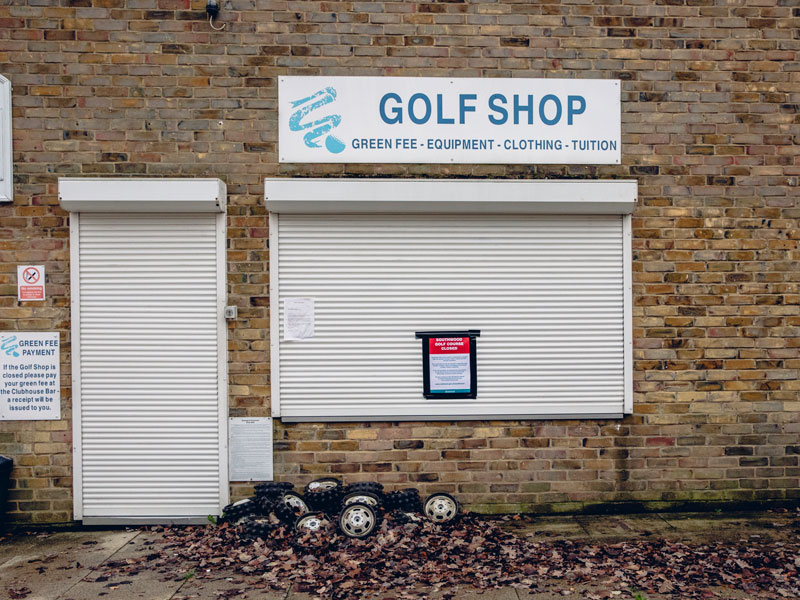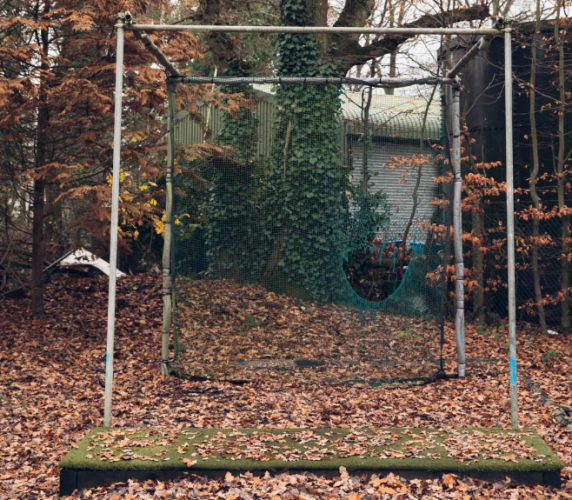Why Did So Many Golf Clubs Close In 2018?
Does the recent flurry of failing golf facilities constitute a crisis, or is it part of the game’s natural cycle of growth and decline?


Does the recent flurry of failing golf facilities constitute a crisis, or is it part of the game’s natural cycle of growth and decline?
Why Did So Many Golf Clubs Close In 2018?
In recent months, there have been a number of news stories highlighting the closure of golf clubs and facilities across the country.
One headline towards the end of 2018 read: “Eight Golf Courses Close Across England.”
There’s potential for scaremongering here, to grab attention with evidence of golf’s imminent death. But that’s a one-dimensional way of looking at it. There are many factors contributing to the closure of these facilities and, in reality, it’s not an indication of golf dying, simply a recalibration within a recurring cycle of growth and decline.
There’s no getting around the principal reason for a golf facility closing down – it’s simple economics; supply and demand.
If there isn’t sufficient demand for a golfing facility, then it will steadily become unviable to a point where it simply doesn’t make sense for it to remain open.
Subscribe to the Golf Monthly newsletter to stay up to date with all the latest tour news, equipment news, reviews, head-to-heads and buyer’s guides from our team of experienced experts.
Golf’s popularity has always waxed and waned. Following a boom in the latter part of the 20th century, the UK and Ireland has a huge concentration of golf facilities per capita.
While an increasing number of people wanted to play golf there was an increasing demand for facilities.
Now, at a time when fewer people are playing outdoor sports in general, there’s a surplus of golf facilities and insufficient investment from the golf-playing public to keep them all afloat.
As the main contributing factor to golf-facility closure is money then it’s the proprietary clubs that face facts first.
When a club or facility is run with an objective of making money for the owners then it will be quicker to close its doors when this isn’t happening.
A club owned by the members will battle on, adapt and survive in times of economic struggle – many across the country have done so on a number of occasions through their long lives.
Looking at the closures across the UK over the last 12 months, most are proprietary facilities.
Let’s examine that headline mentioned in the introduction concerning the eight courses closing.
This was because all eight were operated by a company called Mack Golf, which ceased trading owing to “unavoidable financial difficulties”.

These courses closed because the business that managed them failed and it’s possible some may re-open if another organisation steps in.
There have been other examples of clubs closing in 2018 as they are no longer financially viable, among them Cranbrook GC in Kent, Fishwick Hall GC in Preston and Maywood GC in Derbyshire.
The latter cited declining membership numbers as the primary reason for closure, but also highlighted that, as a proprietary club, they’ve had to pay VAT on member subscriptions, unlike a private members’ club.
Hastings and St Leonards GC in East Sussex is another club that closed owing ostensibly to an “extreme decrease in trade”. But members and owners had different views on the closure.
Expand The Future Of Golf Club Membership

The Future Of Golf Club Membership
Roderick Easdale speaks to a host of different…
Expand Are Golf Club Memberships Value For Money?

Are Golf Club Memberships Value For Money?
A thread on the Golf Monthly Forum got…
Expand Golf Club Membership In England On The Rise

Golf Club Membership In England On The Rise
England Golf's latest membership survey results are out…
Speaking to the Hastings Observer, a spokesperson for the members complained of poor management, while a spokesperson for the directors pointed to a lack of member support.
Canwick Park GC in Lincoln entered liquidation and the tipping point for them was the level of rent they were bound to pay for the land on which the course sits. They paid Jesus College, Oxford £25,000 per annum.
In some cases it’s the land rather than the finances driving closure – Raglan Parc GC in Gwent is an example.
Despite increasing the membership by over 100 after working closely with Wales Golf, the owners could not reach an agreement with the landowners on either a new lease or on their offer to purchase the land outright. With no path forward, they were forced to close.
Deangate Ridge GC in Kent closed last April as landowners Medway Council supported the land’s inclusion within the Medway Local Plan as a housing allocation.
Although a number of facilities in England have shut in the last year, only one club closed its doors in Scotland in 2018, Carrick Knowe.
Likewise, just one shut in Wales, Raglan Parc, while just two closed in Ireland – Knockanally and Curra West.
It’s hardly a spate and it’s worth stressing again that clubs and courses closing is something that’s happened, at varying levels of frequency, throughout golf’s history.
A quick look at the excellent website Golf’s Missing Links demonstrates an extraordinary number of defunct golf clubs and courses throughout Britain and Ireland.
Of course, it’s sad to see any golf club or course cease to exist, but there are positives in the wider golfing scheme.
The members of a closed club will, in all likelihood, wish to continue playing golf so will look for another nearby facility to patronise.
The shifting of their investment will bolster the coffers of their new club and perhaps allow it to survive, even to thrive and improve.
England Golf’s recent club questionnaire shows evidence that many clubs are indeed thriving, with average membership numbers increasing from 460 in 2016 to 484 in 2018.
As the home unions and governing bodies strive to promote golf, the game’s popularity will rise again, as it has in the past.
As that happens, entrepreneurial golf lovers will open new facilities. Many will thrive, but in time some will struggle, perhaps even fail.
Golf is a business and that’s how business works.
Expand The Future Of Golf Club Membership

The Future Of Golf Club Membership
Roderick Easdale speaks to a host of different…
Expand New Golf Rules 2019: All You Need To Know

New Golf Rules 2019: All You Need To Know
Golf's governing bodies new rules are in action…
Expand World Handicap System Explained: What Does It Mean For You?

World Handicap System Explained: What Does It Mean For You?
In 2020, a new World Handicap System will…
For all the latest golf news, check the Golf Monthly website and follow our social media channels

Fergus is Golf Monthly's resident expert on the history of the game and has written extensively on that subject. He has also worked with Golf Monthly to produce a podcast series. Called 18 Majors: The Golf History Show it offers new and in-depth perspectives on some of the most important moments in golf's long history. You can find all the details about it here.
He is a golf obsessive and 1-handicapper. Growing up in the North East of Scotland, golf runs through his veins and his passion for the sport was bolstered during his time at St Andrews university studying history. He went on to earn a post graduate diploma from the London School of Journalism. Fergus has worked for Golf Monthly since 2004 and has written two books on the game; "Great Golf Debates" together with Jezz Ellwood of Golf Monthly and the history section of "The Ultimate Golf Book" together with Neil Tappin , also of Golf Monthly.
Fergus once shanked a ball from just over Granny Clark's Wynd on the 18th of the Old Course that struck the St Andrews Golf Club and rebounded into the Valley of Sin, from where he saved par. Who says there's no golfing god?